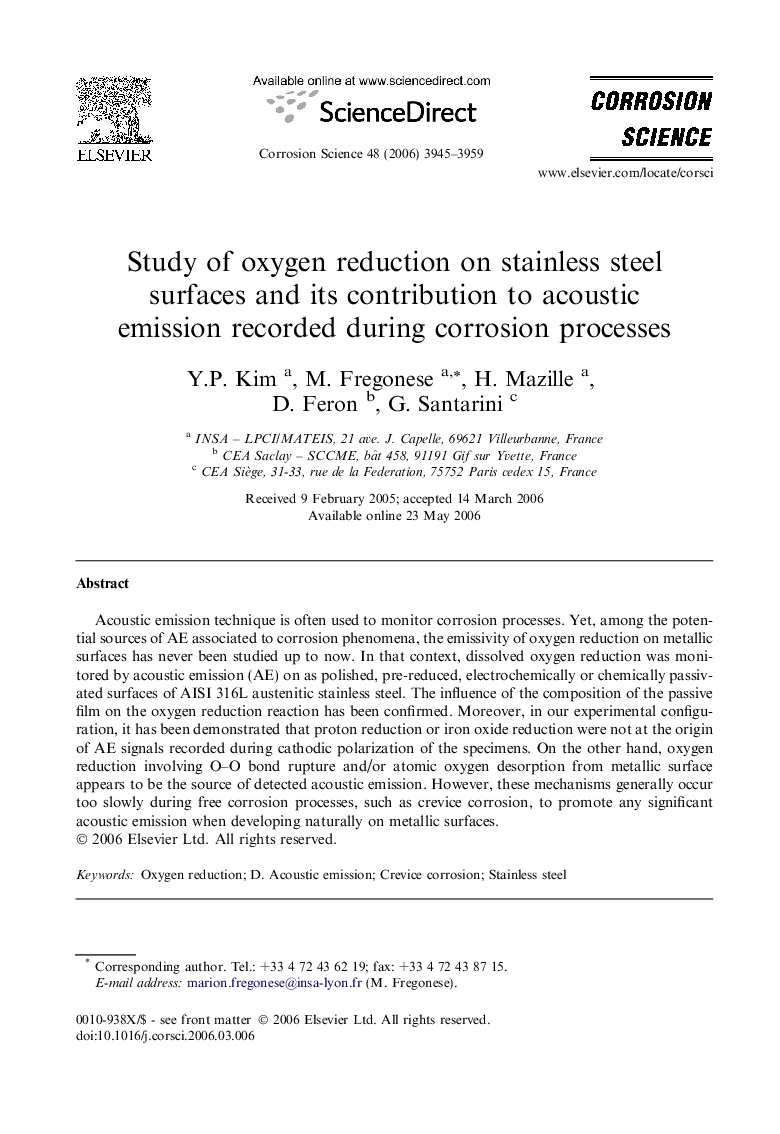| Article ID | Journal | Published Year | Pages | File Type |
|---|---|---|---|---|
| 1472108 | Corrosion Science | 2006 | 15 Pages |
Acoustic emission technique is often used to monitor corrosion processes. Yet, among the potential sources of AE associated to corrosion phenomena, the emissivity of oxygen reduction on metallic surfaces has never been studied up to now. In that context, dissolved oxygen reduction was monitored by acoustic emission (AE) on as polished, pre-reduced, electrochemically or chemically passivated surfaces of AISI 316L austenitic stainless steel. The influence of the composition of the passive film on the oxygen reduction reaction has been confirmed. Moreover, in our experimental configuration, it has been demonstrated that proton reduction or iron oxide reduction were not at the origin of AE signals recorded during cathodic polarization of the specimens. On the other hand, oxygen reduction involving O–O bond rupture and/or atomic oxygen desorption from metallic surface appears to be the source of detected acoustic emission. However, these mechanisms generally occur too slowly during free corrosion processes, such as crevice corrosion, to promote any significant acoustic emission when developing naturally on metallic surfaces.
